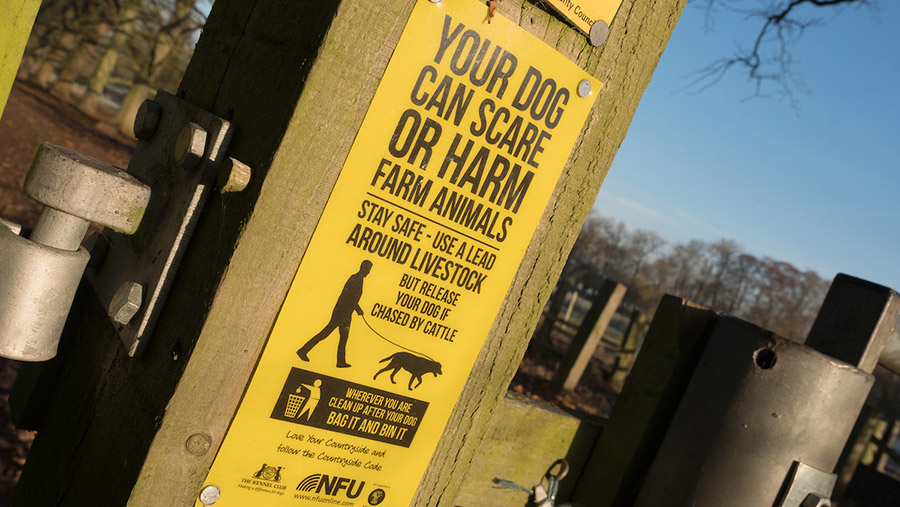Kennel Club advice to help farmers with livestock worrying
 © Tim Scrivener
© Tim Scrivener Clear signs, secure boundaries and a pragmatic approach to educating dog walkers are steps farmers can take to reduce conflict caused by poorly managed dogs and their owners on farmland.
Stephen Jenkinson, the Kennel Club’s access and countryside adviser, spoke to farmers and crofters in Scotland about livestock worrying and dog fouling, which remain two of the biggest issues in rural communities across the country.
See also: The law on shooting dogs – critical facts farmers must know
The NFU Scotland webinar took place on Wednesday (24 March) as tough new livestock worrying law passed the final hurdle in parliament.
Mr Jenkinson said the core message to communicate to dog owners is to keep pets on a lead around livestock and to release the dog if threatened by cattle.
Education
“It is natural to react to the symptoms, but we need to think about why these incidents happen.
“Take a deep breath and respond to the situation. Think about how you want that relationship to end. Remember, they are consumers of Scottish produce, and dog owners are also usually the best-placed people to report rural crimes such as heft or hare coursing,” Mr Jenkinson said.
Farmers can help make walkers more vigilant about clearing up dog mess by explaining the dangers their pet’s poo can pose to livestock through diseases such as neosporosis and sarcocystosis.
Dog control notices, or dog behaviour contracts in England and Wales, are effective ways to educate and instruct problem dog owners, Mr Jenkinson said. The orders can require dog owners to use a muzzle and lead at all times, attend dog training and maintain fencing in their garden.
Secure boundaries
“Securing your boundaries yourself is a really important thing you can do. It may sound like stating the obvious, but time and time again the dogs will just notice those [gaps], so make it easier on yourself and get some bottoming on those gates,” Mr Jenkinson said.
He suggested using vegetation to obscure sight lines and use netting to fill gaps between gate rails. “One straying dog from a local community can result in many attacks.”
Signs
“The key thing people want to know in signage is ‘where can I go and what can I do?’” Mr Jenkinson said. The signs need to be written for the audience, so pictures of dogs will engage them to read and take notice.
Have clear signs to alert walkers at the exact point they are entering and leaving areas with livestock, similar to road signs you would see outside a school.
The 2017 All-Party Parliamentary Group for Animal Welfare report on sheep worrying said leaving signs up for weeks at a time when there is no livestock encourages dog owners who them to disregard the signs as irrelevant and misleading.
Sign advice
- Be clear, credible and consistent
- Have a dog trainer check the meaning and understanding
- Signs should, ideally, have no more than three points
- Locally relevant signage is best
- Change, cover, remove – when livestock are not in the field
- Offer alternative routes
- Use images of dogs to engage walkers
- Say what you do want, rather than what you don’t want
